Arrival of rental car - Trinidad

Nimue
Sun 15 Jan 2012 03:00
|
We had always intended to make a trip into the interior of Cuba and we
thought that after visiting the Cubanacar office in the marina to order a 6
person vehicle for 3 days, all was well. That was until we all arrived at
the office, with bags packed, on the day we thought we had ordered it, only to
find that the car wasn’t there and wasn’t likely to be for some time!
Apologies all round, but that was all we got! Despite a larger vehicle
sitting outside, they weren’t prepared to upgrade, unless we paid a much higher
price. So basically, we had return to the boats and wait almost a week for
the right size car to turn up! Customer service, the Cubans have never
heard of this work ethic; they just follow orders, do not think outside the box
and don’t want to make decisions outside their remit! Enough of the
rant. Eventually we did get the car and it was a perfect fit for the 6 of
us and all our luggage; well just!
There are few road signs in Havana and road maps are not particularly
clear, so it took some time to find the autopista out of Havana. Once on
the motorway, again devoid of vehicles, Michael was able to straddle the lanes
to avoid the many pot holes, or any rough road and we sped though a contrasts of
landscapes and scenery. it not unusual to see horse drawn carts and men on
horseback on the motorway, but also men jumping out to sell their goods
e.g. big cheeses and nougat; quite a dangerous occupation! So to our
first destination Sancti Spiritus. A walk around and a coffee and then on
our way to Trinidad.
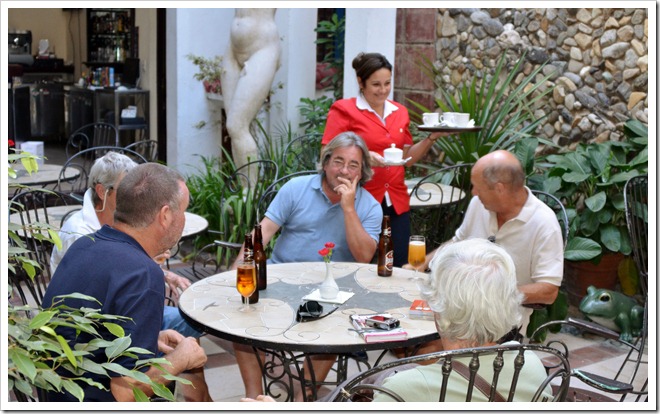  A drink stop at a local bar/hotel in
Sancti Spiritus
 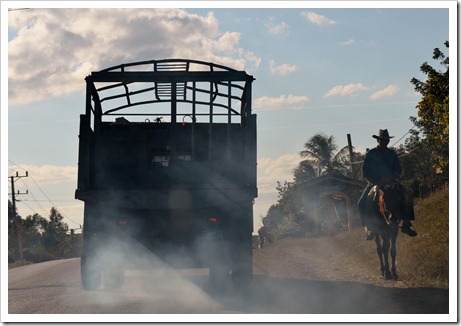 On our way to
Trinidad...............vaqueroes (Cuban cowboy) and smokin’
lorries
We had asked Marina Hemingway to book a ‘casa particular’ in
Trinidad. This is basically a private family establishment that provides
paid lodging, usually on a short-term basis. “Casa particular” literally
means "private house" but it started to be used to mean “private accommodation”
in 1997, when the Cuban government allowed Cubans to rent out rooms in their
houses or apartments to tourists, providing Cuban families with new sources of
income. Casas particulares can be recognised by a small sign on the door, with
two blue triangles ('roofs') against a white background, which the owners obtain
after paying a fixed per-room annual tax.
Although we had been given the name of the owner of the ‘casa particular’
in Trinidad, we were soon hijacked by one of the many guides, who said it was
owned by his family. However, we don’t think this was the case and we were
taken somewhere else. Usually each family is allowed to rent out 2 rooms
in a ‘casa particular’. so Michael and I stayed in a separate ‘casa’ to Steve
and Chris and Brian and Sandy. After eating a freshly prepared meal in one
of the Casa’s, we walked to the Plaza Major to enjoy a local
festival. The roads around the Plaza – and elsewhere in town –
are cobbled and closed to traffic, so the tourist is able to see life as was
lived 200 years ago.
Due to plentiful sugar mills and smuggling activity during the 16th
century, Trinidad was prosperous, resulting in an array of beautiful buildings
that still stand today. In 1988 UNESCO proclaimed Trinidad a World Heritage Site
and now the most famous and best-preserved colonial town on the
island. Unusually for Cuban towns, Trinidad is not laid out on a
grid and the streets were built so that one side is always in the shade.
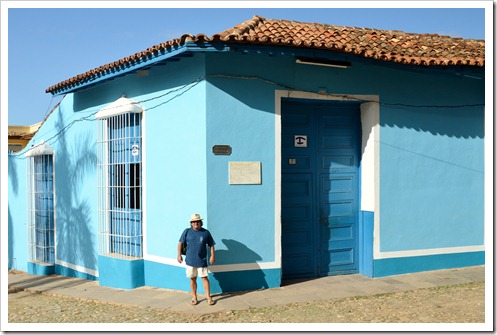  The blue triangles on the door on the
casa particular
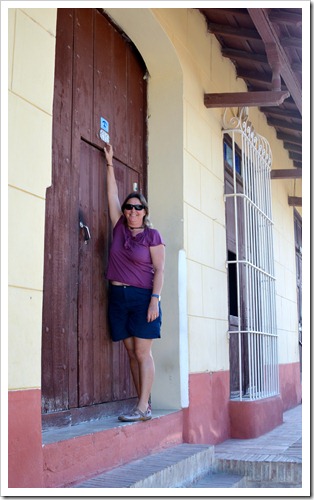 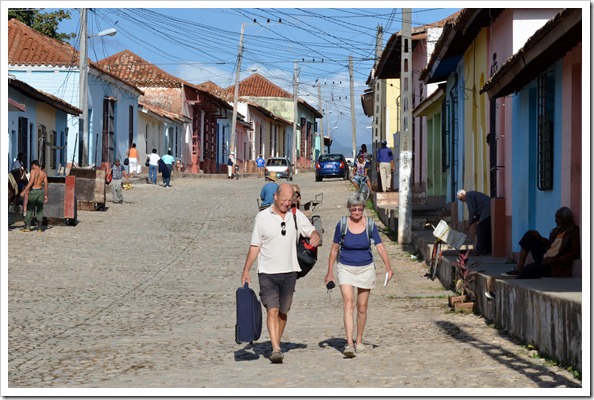 This was our ‘casa’ and Sandy &
Brian on their way to their ‘casa’.
 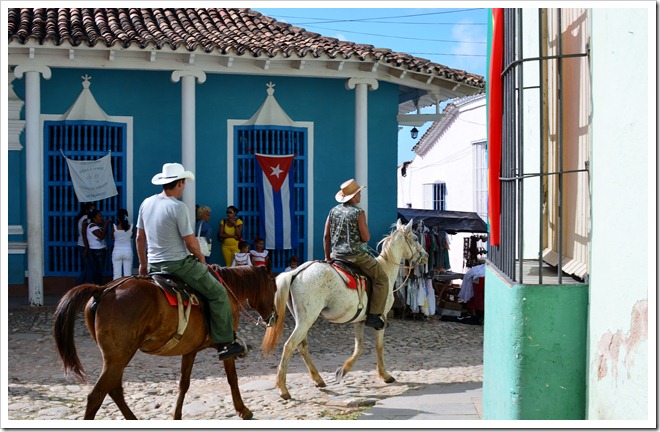 The Cuban cowboys have arrived in town!
 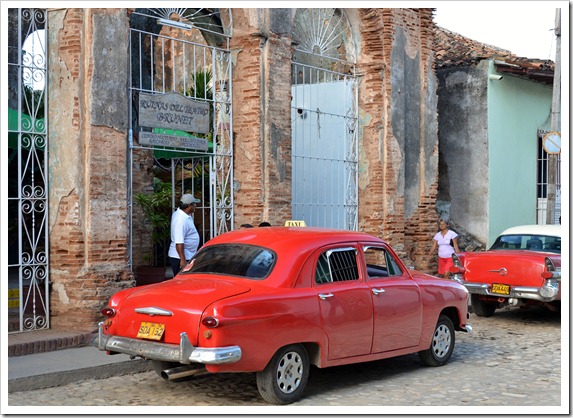 Browsing around the street sellers and
the roads around the square are closed to traffic!
The Plaza Major (or Parque Marti) is at the centre of the old town and is
the sunniest spot in town, with tall elegant palms.
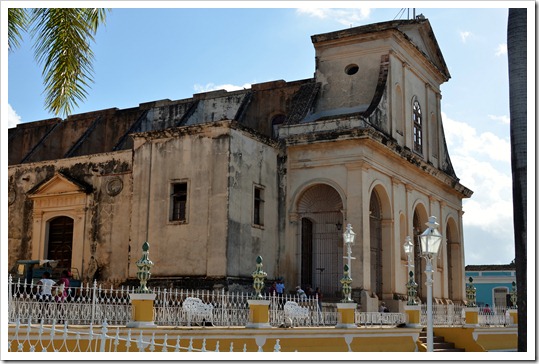 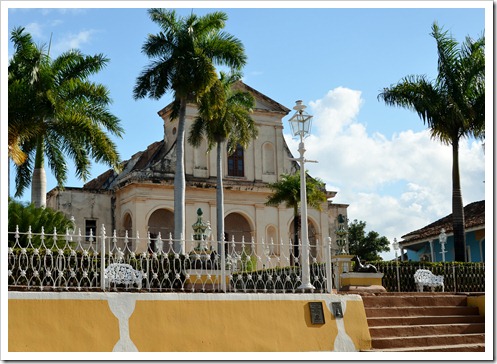 Church of the Holy Trinity (Romanesque
style) on the northeastern side of the Plaza Major
 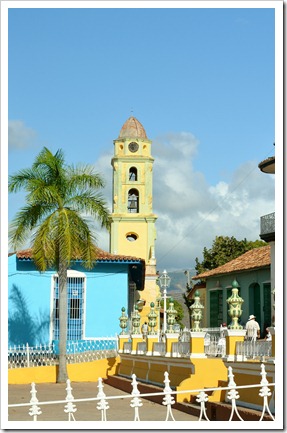 Museo Nacional de la Lucha Contra Bandidos (back left)The withered pastel-yellow bell tower of the former convent of San Francisco de Asís, but has housed a museum since 1986. The displays are mostly photos, maps, weapons and other objects relating to the struggle against the various counterrevolutionary bands that took a leaf out of Fidel's book and operated illicitly out of the Sierra del Escambray between 1960 and 1965. The fuselage of a US U-2 spy plane shot down over Cuba is also on display. . 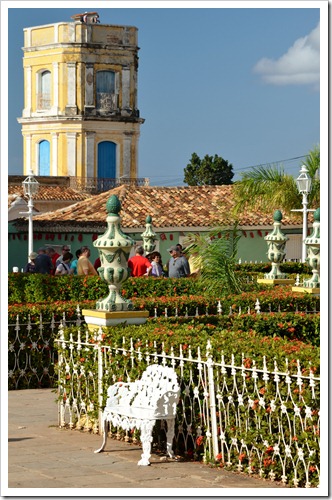 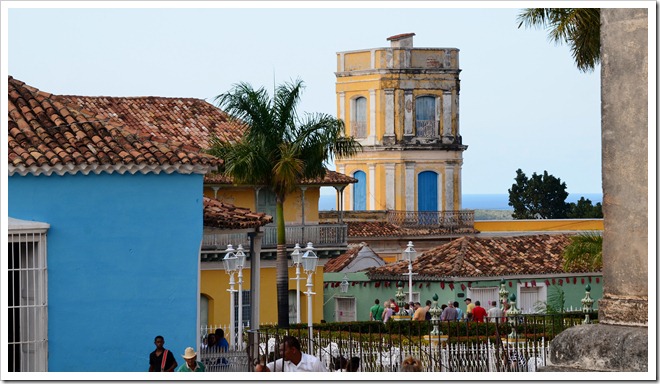 Plaza Major (above &
below)
 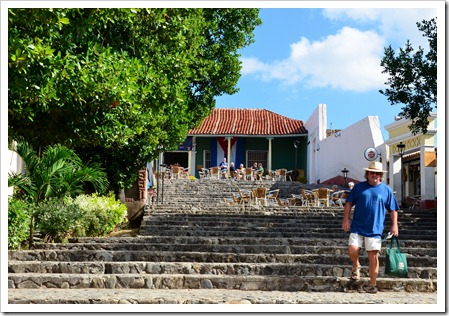 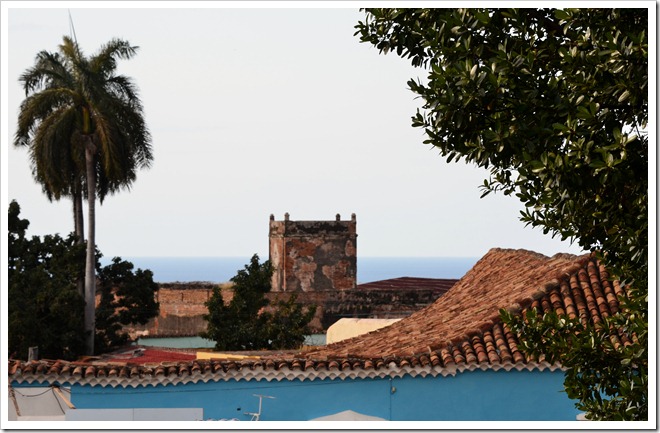 A view of the sea from the top of the
steps in Plaza Mayor
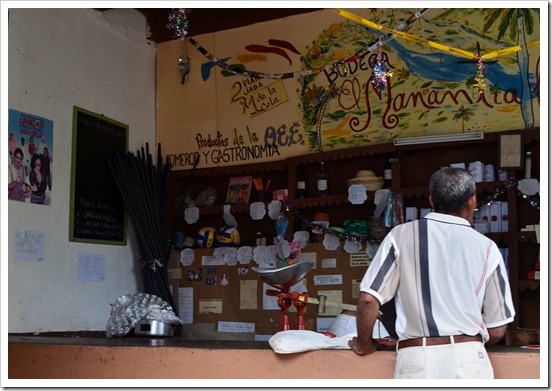  One of the local convenience stores
(where monthly rations are purchased). The blackboard details products,
prices and limits.
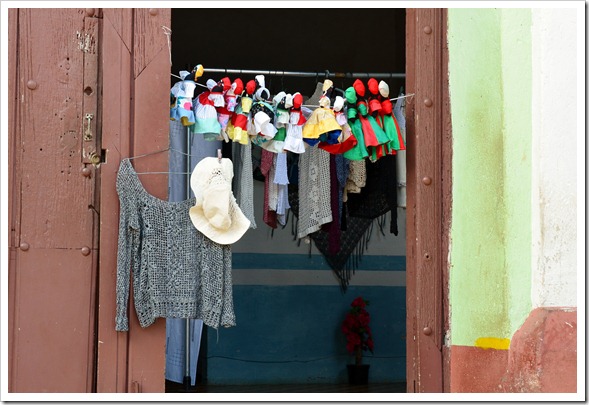 Just a pretty picture of wares being
sold in a doorway!
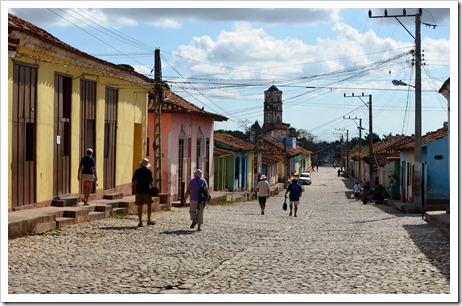 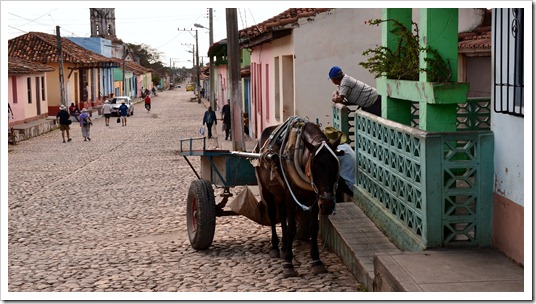 The quiet cobbled streets of Trinidad
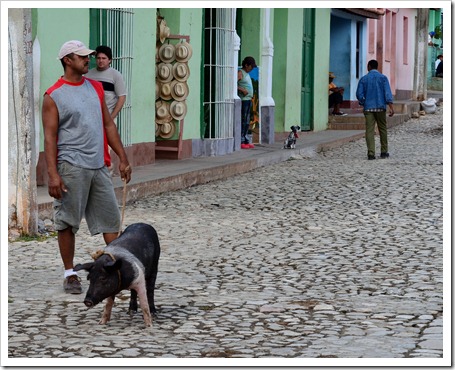 .......and this little piggy went
to............(it was squealing like mad, so it knew where it was going
too)!
Sleeping on the hard, lumpy beds was somewhat difficult to cope with, but
nevertheless we rested and the next morning we all got together in our ‘casa’ to
enjoy a good breakfast. Each couple paid CUC 25 for the room inc.
breakfast (+ evening meal) and after finding a petrol station (which only took
cash) we drove towards Cienfuegos.
|